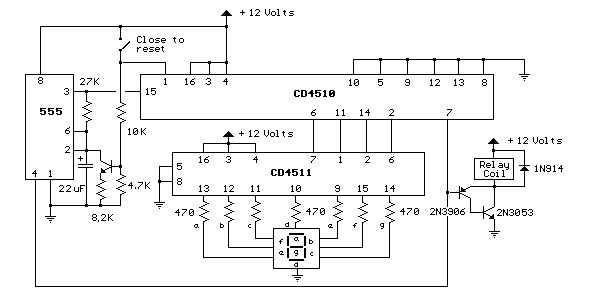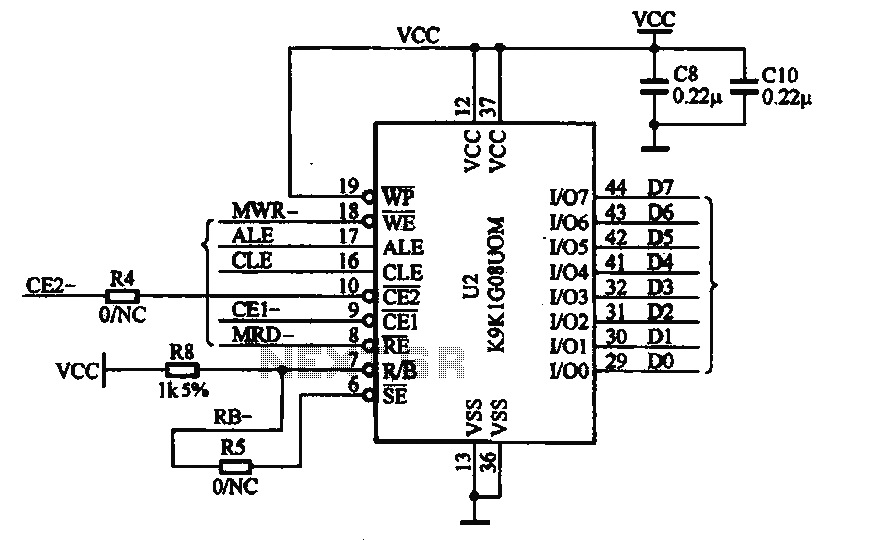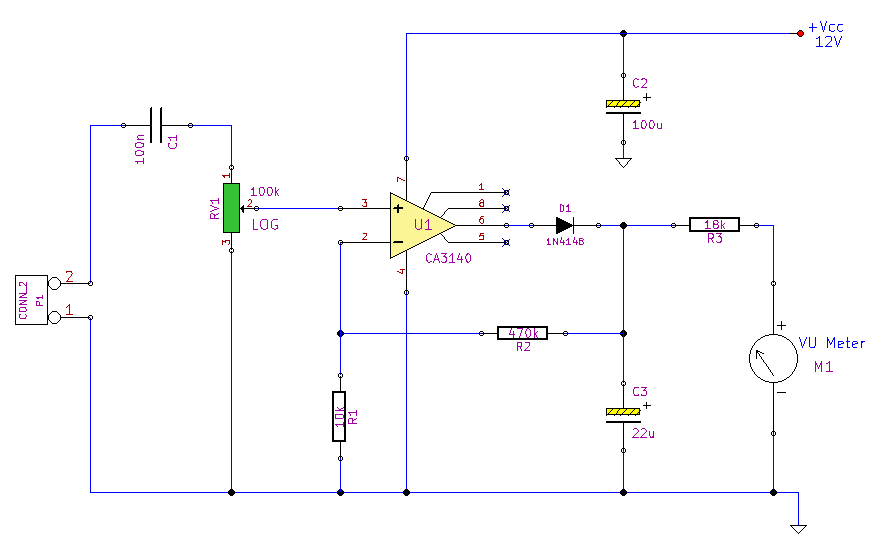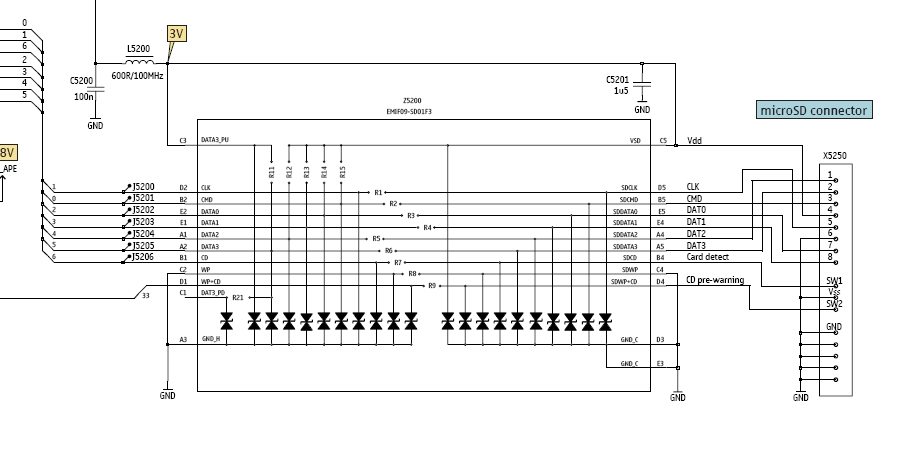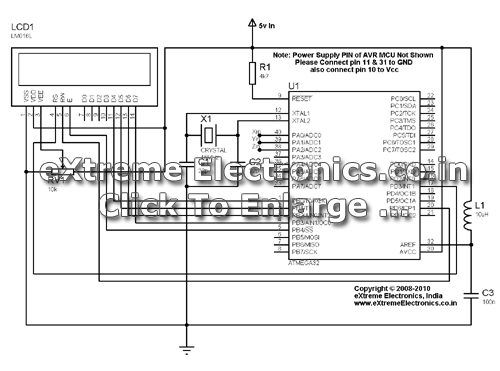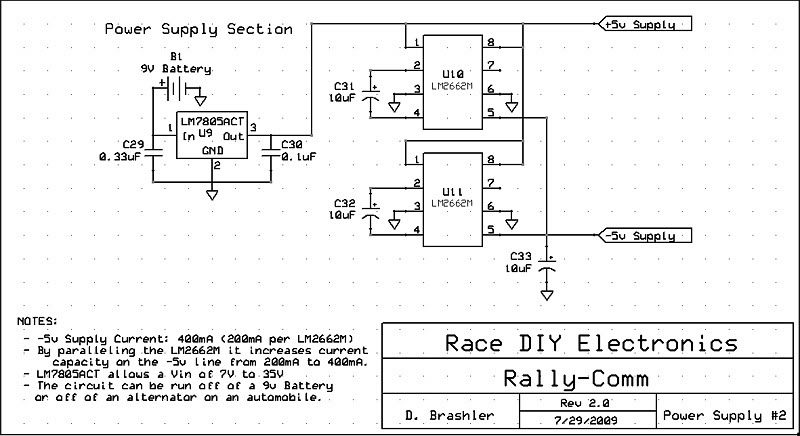
read and write to 74lc16b memory in picaxe
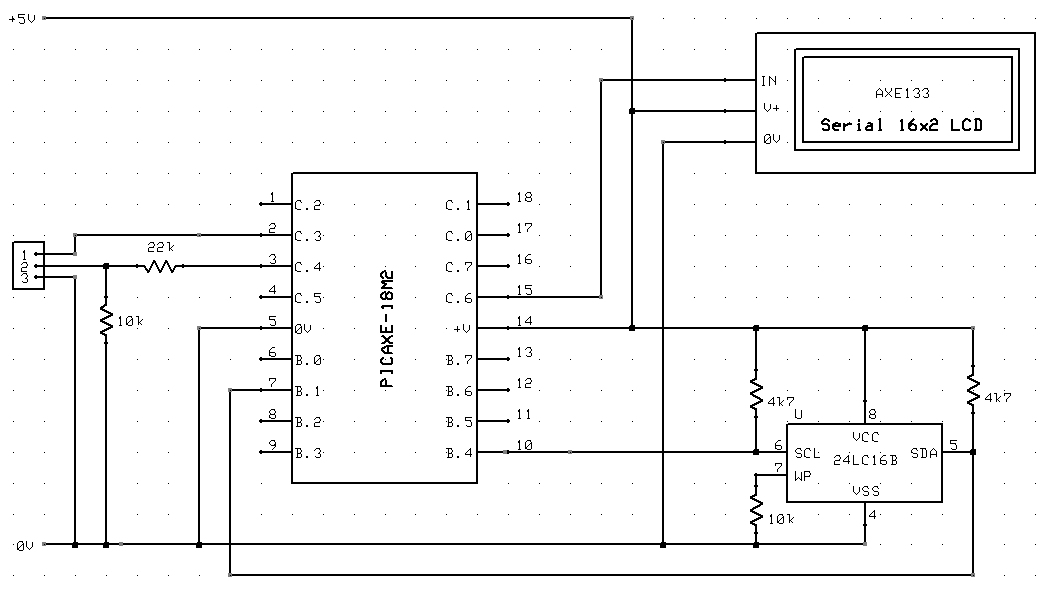
A circuit diagram and sample code is provided to read and write to the 74LC16B memory from a PICAXE microcontroller.
The circuit involves interfacing a PICAXE microcontroller with a 74LC16B memory chip, which is a type of EEPROM (Electrically Erasable Programmable Read-Only Memory). The PICAXE microcontroller serves as the control unit, executing instructions that allow for data manipulation within the memory chip.
In the schematic, the PICAXE microcontroller is connected to the 74LC16B via a series of data and control lines. The data lines are typically connected to the microcontroller's digital output pins, which will send and receive data to and from the memory. Control lines such as Chip Select (CS), Write Enable (WE), and Output Enable (OE) are also connected to specific pins on the microcontroller to manage the read and write operations effectively.
The circuit is powered by a suitable voltage source, often 5V, which is common for both the PICAXE and the 74LC16B. Pull-up resistors may be used on the data lines to ensure stable logic levels during operation.
The sample code provided is essential for understanding how to implement the read and write functions programmatically. It typically includes initialization routines for setting up the memory interface, functions for writing data to specific addresses, and functions for reading data back from those addresses.
Overall, this circuit serves as a practical example of how to interface a microcontroller with an external memory device, showcasing fundamental principles of digital electronics and embedded systems programming.A circuit diagram and sample code is provided to read and write to 74LC16B memory from a PICAXE microcontroller.. 🔗 External reference
The circuit involves interfacing a PICAXE microcontroller with a 74LC16B memory chip, which is a type of EEPROM (Electrically Erasable Programmable Read-Only Memory). The PICAXE microcontroller serves as the control unit, executing instructions that allow for data manipulation within the memory chip.
In the schematic, the PICAXE microcontroller is connected to the 74LC16B via a series of data and control lines. The data lines are typically connected to the microcontroller's digital output pins, which will send and receive data to and from the memory. Control lines such as Chip Select (CS), Write Enable (WE), and Output Enable (OE) are also connected to specific pins on the microcontroller to manage the read and write operations effectively.
The circuit is powered by a suitable voltage source, often 5V, which is common for both the PICAXE and the 74LC16B. Pull-up resistors may be used on the data lines to ensure stable logic levels during operation.
The sample code provided is essential for understanding how to implement the read and write functions programmatically. It typically includes initialization routines for setting up the memory interface, functions for writing data to specific addresses, and functions for reading data back from those addresses.
Overall, this circuit serves as a practical example of how to interface a microcontroller with an external memory device, showcasing fundamental principles of digital electronics and embedded systems programming.A circuit diagram and sample code is provided to read and write to 74LC16B memory from a PICAXE microcontroller.. 🔗 External reference
